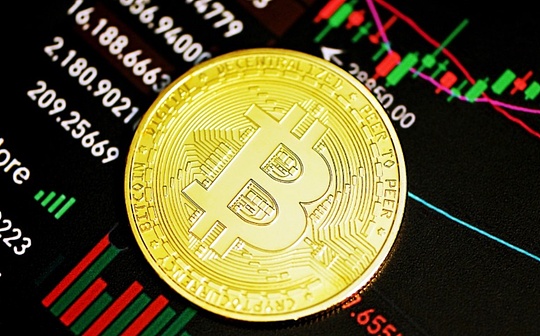
Jessy, Golden Moneythrough
On Thursday, Trump issued an executive order to push retirement plans such as 401(k) to invest in alternative assets, including private equity, crypto assets, and more.
Currently, the 401(k) plan manages $9 trillion in assets, and more than 90 million people across the United States are using the plan.Previously, the plan focused on investing in some low-risk assets, such as treasury bonds, mutual funds, etc.
Market estimates that if the 401(k) plan to allocate only 2% of its assets to cryptocurrency, it means about $170 billion in new capital inflows — equivalent to two-thirds of the market value of existing crypto spot ETFs and listed reserves.
At present, the pension dilemma has become a difficult problem faced by global governments, and what reference has the US government given to other countries?
Pension Dilemma in the United States: Why do 401(k) need alternative assets?
Pensions in the United States are the “three-pillar” model, with forced pensions led by the federal government, supplementary pensions provided by enterprises to employees, and personal reserve pensions.In the US pension system, although social security (federal pension) is based, it can generally only cover basic living expenses. Many middle-class families rely on supplementary pension plans such as 401(k) to support the quality of retirement life.
401(k) is a long-term pension savings account opened by American employers for employees, enjoying tax benefits.Employees can deposit part of their salary without paying taxes, and directly deposit it into this account to invest, and then withdraw it after retirement.Employers will prepare an investment list (usually 20-30 funds), and employees will decide how much salary they invest (such as 6%), and then select the funds and allocation ratio from the list.The salary will be automatically deducted, and the employer will usually “increase” your investment – for example, how much employees invest, the employer will make up half of it as a benefit.
401(k) As a personal account-type plan provided by employers, voluntarily paid by employees and enjoy tax deferred benefits, it was once regarded as an important means for individuals to accumulate retirement wealth independently.
However, the reality is worrying.According to the latest survey, only about one-third of 401(k) participants still believe they can achieve their retirement goals due to factors such as inflation and rising medical expenses, down from 43% last year.Meanwhile, state and local public pensions generally face trillions of dollars in outstanding gaps.For example, state-level pension systems have pledged to pay a total of $6.3 trillion in pensions, with actual assets only $4.9 trillion, and a gap of nearly $1.4 trillion.
Against this background, Trump’s logic of promoting the introduction of alternative assets appears clearer – in an environment of low interest rates and inflationary pressures, traditional investments are difficult to increase the appreciation of funds, forcing policies to turn to “higher-return assets.”Although alternative assets (such as private equity, real estate, cryptocurrencies, etc.) are more risky, their potential returns and their ability to diversify assets are attracting more and more pension managers.For example, the California Public Employee Retirement System (CalPERS) plans to add more than $30 billion to the private market, and the current allocation of public pensions to alternative assets has increased from 14% in 2001 to nearly 40% in 2021.
Breaking regulatory barriers through executive orders allows 401(k) participants to also choose more abundant and potentially higher assets, which policy supporters see as “democratic financial opportunities.”
Money does not flow to crypto assets immediately
There were no crypto assets in the previous 401(k) investment list, and this is the first time that the policy has opened the door.Some people believe that even if 401(k) only takes out 2% of pocket money, the crypto market will immediately make $170 billion more – almost two-thirds of the total existing crypto spot ETFs and listed reserves.
However, this money cannot flow into the crypto market immediately. This money is expected to have an implementation cycle of at least half a year to two years. First, the Ministry of Labor first issues detailed rules to clarify how to invest in alternative assets, proportion restrictions, product disclosure, etc. 401(k).The service provider then designs fund products that comply with the rules and incorporates crypto assets into it.Finally, the employer decides whether to add these new funds to the investment menu, and the employee decides whether to configure them.It can be seen that in this process, various crypto spot ETFs are most likely to be included because they are regulated and have higher liquidity.
However, critics have also raised warnings about this policy, believing that most alternative assets have problems such as poor liquidity, high expenses, low transparency, difficult valuation, and slow market exit, which may bring greater systemic risks, especially when the economy is downturned, investors find it difficult to get back funds in time.In addition, whether the evaluation criteria for fiduciary responsibilities under the regulatory framework can effectively protect ordinary investors has also become the focus of controversy in current public opinion.
However, the Trump administration’s move has indeed given other countries reference significance to deal with the pension dilemma. In the global low interest rates and inflation environment, traditional fixed income assets are difficult to maintain and increase the value of pensions.Trump’s measures encourage pension investment to allocate more diversified assets, including private equity, crypto assets, etc.This provides other countries with an idea – by allowing pensions to enter high-risk, high-yield alternative asset markets, it may bring higher long-term returns to pensions, thereby alleviating future pension payment pressures.
And this policy delegates investment options partially to the market and individuals.The executive order emphasizes that while the government provides basic guarantees (the first pillar), individuals should bear more responsibility for retirement savings and investment (the third pillar).This is an important conceptual change for countries whose pension systems are overly dependent on government.It encourages citizens to participate more in their pension plans and change “save pension” to “investment pension”.







